|
Displaying items by tag: Winslow Homer
For years the Sterling and Francine Clark Art Institute, with its magnificent collection of 19th century art (among other goodies) has felt like a bastion against the world outside its gates, a step back in time to the glories of Winslow Homer, John Singer Sargent and the French Impressionists. (After that it was no Modernists need apply for the ultraconservative Mr. Clark.)
The thoroughly modern new museum isn’t a refutation of the old one, though. The architects don’t drag it kicking and screaming into the 21st century, even if not everyone wants to come along. It’s way too Zen for any such temperamental demonstrations.
As its landmark Made in the U.S.A. exhibition continues through August 31, The Phillips Collection unveils another layer of interactive programming through an educational app. The “uCurate: The Phillips Collection” app, compatible with Android and Apple devices, is an extension of the museum’s existing in-gallery and online program, an engagement technology that allows users to curate their own virtual exhibitions.
Using the free uCurate app, participants may choose from 52 artworks featured in Made in the U.S.A.—ranging from Winslow Homer’s To the Rescue (1886) to Alexander Calder’s Red Polygons (c. 1950)—and arrange them in a “virtual gallery.” The artwork is organized according to the exhibition’s themes, and users can add their comments to the information panels provided with each piece.
The collection of American art at the Shelburne Museum tells the story of a new country finding its way through the 1700s and the 1880s. The 540 paintings help illustrate the history of a nation growing through westward expansion. The artwork, with its images of country stores and horse-drawn carriages, also begins to explain the Shelburne Museum itself, which was founded by Electra Havemeyer Webb in 1947.
"(The paintings) were kind of animating the museum for visitors," according to the museum's director, Tom Denenberg. "Without a doubt, the museum is already fixed in her head when she's buying these (paintings) in the late 1950s."
The Delaware Art Museum will auction off one of its iconic Pre-Raphaelite paintings, "Isabella and the Pot of Basil" at Christie's in London next month, museum officials announced Tuesday. The William Holman Hunt oil painting, purchased by the museum in 1947, is one of as many as four works the museum will sell over the next several months to pay off construction debt and replenish its endowment. The Delaware museum boasts the most significant collection of Pre-Raphaelite works outside of the United Kingdom.
Museum officials have declined to release the names of the other works, explaining that it could hurt the market for private sales. They have promised not to sell any works acquired through gift or bequest. Winslow Homer's "Milking Time," one of the museum's most treasured works purchased in 1967, disappeared from its wall and collections database last month. Museum officials won't confirm that it is scheduled to be sold.
Winslow Homers in the shadow of a defunct Beech-Nut baby food plant. A Rembrandt, Picasso, Rubens and Renoir up the hill from a paper mill. The founder of the Hudson River School vying for attention amid baseball memorabilia and old farm machinery.
There are plenty of treasures to be found among the collections of lesser-known, off-the-beaten-path art museums dotting upstate New York. But they're well worth the trek for anyone looking for great art in unexpected places, whether it's the rolling, bucolic countryside typical of many areas or the industrial grittiness of riverside mill towns.
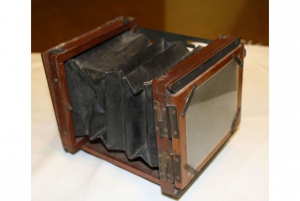
The Bowdoin College Museum of Art in Brunswick, Maine has acquired a late 19th-century camera originally owned by the American artist Winslow Homer. The dry plate camera was manufactured around 1880 and will enhance the museum’s existing collection of archival material related to Homer’s life and work.
The camera, which was donated to the museum by Neal Paulsen, a long-time resident of Maine, was designed for amateur photographers and renowned for its portability and ease of use. It was manufactured by Mawson & Swan, a photography business in England. Homer purchased the camera in 1882, during a two-year residence in Cullercoats, a small fishing village in northeast England. The date, “Aug 15, 1882,” and Homer’s initials are inscribed into the camera’s wooden plate holder.
Frank Goodyear, Co-Director of the Bowdoin College Museum of Art, said, “We are so pleased to receive this exciting gift, which complements our current holdings of Homer’s work and documentation perfectly. The camera highlights Homer’s varying artistic interests, and helps to illuminate a lesser-known side of one of America’s greatest painters.”
Homer is one of the foremost figures in American art and is well known for his seascapes and marine paintings. Born in Boston, Massachusetts, Homer was an avid traveler and spent time living and working in New York City, Paris, and England, among other places. However, during his years in Prout’s Neck, Maine, Homer produced some of his most defining masterpieces. Homer moved to Maine in 1883 and spent most of his time working in his studio, a former carriage house, just 75 feet from the ocean. Homer remained in Prout’s Neck on his family’s estate until his death in 1910. Homer’s paintings from this period are defined by their crashing waves, rocky coasts, and his expert use of light.
The Bowdoin College Museum of Art has a special exhibition on Homer and photography scheduled for August 2015. The show will feature the recently acquired camera alongside photographs taken by Homer.
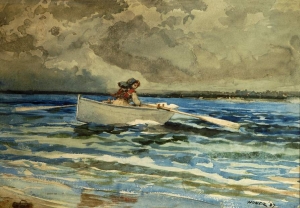
On March 1, 2014, “An American Odyssey: The Warner Collection of American Painting” will open at the Frick Art Museum at the Frick Art & Historical Center in Pittsburgh, Pennsylvania. The exhibition features 50 paintings from the collection of Alabama businessman and philanthropist, Jack Warner. Warner, who is the former CEO of Gulf States Paper Corp., founded Alabama’s Tuscaloosa Museum of Art in 2011.
The exhibition, which spans the entire 19th century, includes works by Gilbert Stuart, Charles Peale Polk, Thomas Cole, Frederic Edwin Church, Severin Roesen, William Merritt Chase, James McNeill Whistler, Winslow Homer, Childe Hassam, Maurice Prendergast, John Henry Twachtman, and Mary Cassatt. The comprehensive show tracks the evolution of painting in the United States from early American portraiture to the romantic paintings of the Hudson River School and the rise of American Impressionism during the tail-end of the century.
“An American Odyssey: The Warner Collection of American Painting,” which was organized by the Warner Foundation, will remain on view at the Frick Art Museum through May 25, 2014.
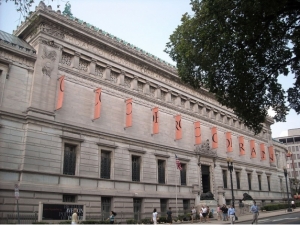
According to a plan announced on Wednesday, February 19, Washington, D.C.’s Corcoran Gallery of Art could hand over its vast, 17,000-piece collection to the government-backed National Gallery of Art. Under the proposed plan, George Washington University would assume control of the Corcoran’s historic Beaux-Arts building as well as the Corcoran College of Art and Design.
The proposal aims to keep the Corcoran open to the public and its collection, which features works by Claude Monet, Pablo Picasso, Winslow Homer, John Singer Sargent, Edward Hopper and Willem de Kooning, would remain in public institutions. The National Gallery would present exhibitions of modern and contemporary art in the Corcoran under the name Corcoran Contemporary, National Gallery of Art. It would also oversee the Corcoran Legacy Gallery, which would present a selection of works from the Corcoran’s collection.
The Corcoran, the largest privately supported art museum in the country, opened to the public in 1897. The museum has been struggling financially for years and is in need of considerable renovations.
A decision regarding the proposal is expected to be made in April.
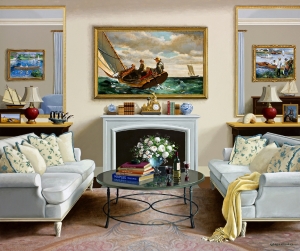
DeBruyne Fine Art of Naples, Florida, will host its thirteenth solo exhibition by internationally acclaimed artist Jenness Cortez. On view January 30 through March 31, 2014, 'Homage to the Creative Spirit 2014' presents the next chapter in an enriching visual conversation between the artist and the viewer. Among the many themes raised by her new realist work is Cortez’s heartfelt conviction that iconic images, when seen in familiar domestic settings, can inspire each of us to rediscover and revalue our own creative potential. Each intricate Cortez painting challenges the viewers’ intellectual curiosity and celebrates the sheer pleasure of beautiful painting. In her new work, Cortez plays author, architect, visual journalist, art historian, curator and pundit to help open our eyes to what we might otherwise have overlooked or taken for granted. In part, this year’s body of work pays homage Albrecht Dürer, George Stubbs, Albert Bierstadt, Pablo Picasso, George Inness, Winslow Homer, Claude Monet, Pierre-Auguste Renoir, Johannes Vermeer and Vincent Van Gogh.
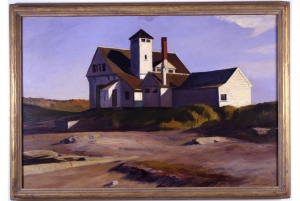
In honor of its 100th anniversary, the Montclair Art Museum in Montclair, NJ is currently hosting the exhibition ‘100 Works for 100 Years: A Centennial Celebration.’ The show is organized chronologically and features works from the museum’s permanent collection that reflect its rich history.
The exhibition was unveiled at the museum’s 100th Birthday Party on January 15 and includes works by Childe Hassam, Asher B. Durand, Thomas Eakins, Winslow Homer, John Singer Sargent, Robert Henri, Edward Hopper, Mark Rothko, Robert Motherwell and Andy Warhol. ‘100 Works for 100 Years’ will be on view through July 31.
The Montclair Art Museum is devoted to American art and Native American art forms. Its collection consists of over 12,000 works and includes paintings, prints, drawings, photographs and sculpture dating from the 18th century to the present. The museum has the only gallery in the world dedicated solely to the work of the 19th century American painter George Inness, who lived and worked in Montclair.
|
|
|
|
|